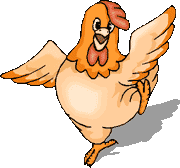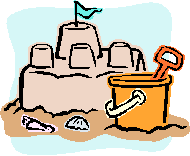
Little Red Hen
Centre for Early Childhood Care and Education
8 Lower Shantalla Road Galway
Email: katielrh1@gmail.com
Toddlers
Junior Montessori
Senior Montessori
After School
The Value of Play
Sand Play
Water Play
Heuristic Play
Small World Play
Computers
Montessori
Free Play
Circle Time
Policies & Procedures
Behaviour Management
 Sand,
like water, can be a soothing, absorbing and entertaining medium for young
children. Adults can even be caught occasionally running sand through
their fingers (or toes - depending on the location), enjoying the texture
and the qualities of this wonderful and natural substance.
Sand,
like water, can be a soothing, absorbing and entertaining medium for young
children. Adults can even be caught occasionally running sand through
their fingers (or toes - depending on the location), enjoying the texture
and the qualities of this wonderful and natural substance.
What are children learning while they are playing with sand?
The main value in sand play is that it is fun. There really needs to be no more justification than that in supplying this activity. However, there are a lot of other things going on when children are playing with sand that are worth noting. The following examples of the learning that takes place during sand play are, by no means, meant to be an all-inclusive list. They are just a starting point. Just ask your child child about playing with sand - he or she are bound to describe lots of other wonderful benefits of playing with sand. Cognitively:
Children are also experiencing
the Piagetian operation of conservation of matter as they play with sand.
As they pour sand from a tall, narrow container into a short, fat container
they are finding out that the amount of sand can remain the same, even
if the shape changes. As they incorporate varying sizes of containers
into their play they are finding out about concepts such as "more
than", "less than" and "equal". They are learning
to problem solve as they figure out, for example, how to keep their mountain
from falling into their road way.
Other cognitive skills that are
being developed as children play with sand are prediction ("Where
are those plastic animals hiding?"); cause and effect ("Oh,
that's what happens when I pour the water on the sand!"); and seriation
("OK, let's see - this smaller measuring cup fits into this middle
sized measuring cup and they all fit into this big cup.")
Language skills are being developed
as well during sand play. Vocabulary such as "gritty", "grainy",
"coarse", "fine" "sieve", "colander",
"texture", "measure" can be easily incorporated into
conversations about sand. Of course, like all activities in an early childhood
education setting, the opportunity is there to develop expressive and
receptive language by participating in conversations with playmates and
adults during the sand play. Children can become quite talkative at the
sand table as they exchange ideas and create scenarios with the play materials
they incorporate into their play.
Physically:
Pouring, sifting, measuring, smoothing,
rubbing, patting....all of these fine motor activities occur naturally
during sand play. From the simple pouring of sand through their fingers
to the elaborate construction of castles, children are developing the
use of their fingers, their hands and their eyes in fine motor and perceptual
motor activities. Gross motor activities are more likely to occur during
outdoor sand play. Children carry buckets of sand (a real opportunity
for comparison between wet and dry sand!) from one area to another. If
the sand box is big enough, the day is warm enough children can move their
bare legs and feet through the sand. Another wonderfully tactile experience!
Socially/Emotionally:
While observing children at a
sand table, adults can see examples of unoccupied play, onlooker play,
solitary play, parallel play, associative play and cooperative play -
sometimes all at the same time! As mentioned earlier, there is no
wrong way to play with sand (OK, OK... for those of you who have had to
deal with sand being thrown in someone's eyes, I'll concede on that point
- there may be at least one wrong way to play with sand!) therefore, one
child may approach the sand table with the sole objective of running her
fingers through the sand as she looks around the room, watching other
children at play, while another child may organize a construction crew
at the sand box who all work together building a village. In this way,
sand is a perfect example of a developmentally appropriate activity. It
suits the needs of varying age groups of children, as well as suiting
the individual needs and interests of children.
What
is the Adult's Role in Facilitating Sand Play?
Although there are lots of things
to be learned at the sand table, this does not mean that there are lots
of things to be taught at the sand table. The learning that occurs comes
from the children themselves as they explore and discover. The adult's
role in all of this is to set the stage, help to get children started
whenever necessary, stay observant so that he or she can move in when
appropriate and be an overall facilitator of the play.
Being with a child who is playing
in the sand can be a relaxing and conversational time for both the child
and the adult. The adult can settle herself close to the sand table and
gently comment on what she observes a child doing while he is exploring
the sand. It is up to the child, then, if he wants to turn her comments
into a conversation by replying back to her or not responding if he wants
to continue with his play by himself. For example, she might comment on
the texture of the sand, i.e. "This sand feels cool and damp"
as she pats the sand with her hand or she might make an observation on
what she sees the child doing, i.e.,"You packed a lot of sand into
that container." Her role can also be to ask open-ended questions,
"Now that all the sand is in the bucket, I wonder what is going to
happen next?" which might stimulate the play or, if the child is
wrapped up in his own play, may be ignored. The adult must remember to
take her cue from the child by moving in when it seems appropriate to
do so or moving away when the child is absorbed in his own activity.
The adult's role also encompasses
supplying the appropriate play materials. You don't necessarily need to
have an agenda in mind when supplying the materials. Some of the
materials that can be interesting and fun to include in sand play are:
| buckets, bowls and containers |
small fish nets |
shells |
| shovels |
small flags |
gardening tools |
| spoons of various types |
flat pieces of wood |
small plastic animals
or dinosaurs |
| measuring cups |
plastic flowers |
small plastic people |
| measuring spoons |
baking and cooking utensils |
cars and trucks |
| colander |
toy furniture |
popsicle sticks |
| sieves of varying sizes |
funnels |
string |
| screening (as long as
there are no sharp, poky edges |
shakers with large holes,
i.e., Parmesan cheese shakers |
small twigs (with no
really pointy ends) |
| plastic paint scrapers |
potato mashers |
|
| small plastic insects
|
rocks and pebbles of
various types including smooth beach rocks |
|
A major role of the adult is to
observe the play of the children and make plans according to their observed
needs and interests. One of the ways that the adult does this is to observe
how the children interact with the play materials provided and adapt the
environment accordingly. If there are not enough play materials available
(i.e. children are fighting over who gets to play with what) then more
materials can be added. If there are too many things out at one time then
some should be removed. If the play starts to wan then the existing materials
should be replaced or added to. If the play is very vibrant then the adult
might want to build on this interest by adding materials that will keep
the play going.
Sand play, like water play, is an integral part of any childcare setting. It's relatively inexpensive, materials are easy to come by and it is the favourite activity of many children and adults. Next time you are squishing sand between your toes at the beach or digging in your garden, think about the wonderful qualities of this natural substance and all the benefits that can come from being allowed the opportunity to play with sand.